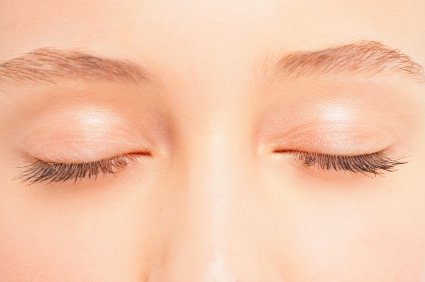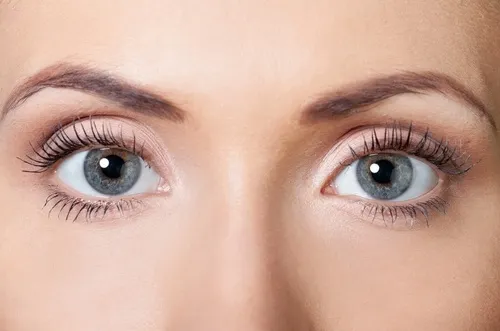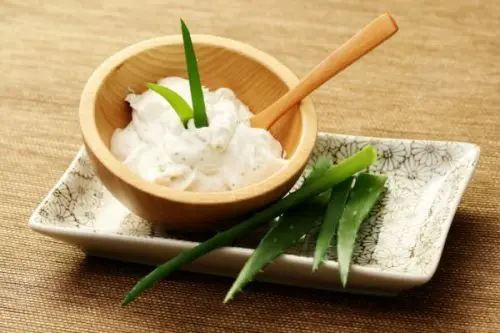How to Prepare a Homemade Eyelid Firming Cream


Reviewed and approved by the doctor Karla Henríquez
Your eyelids are much more sensitive than other areas of your face. They tend to sag and display early signs of aging because of their direct exposure to the sun and toxins. Here, we’ll explain how to prepare a homemade eyelid firming cream.
Although sagging eyelids may also be due to genetic factors, it often reflects a nutritional deficiency due to lack of care.
While some surgical procedures can correct this problems, there are less aggressive options that can be used at home, especially for the less extreme cases.
Among these is a homemade all-natural cream that improves skin elasticity and firmness thanks to its ingredients.
Find out all the benefits and how to prepare the treatment at home with a few simple steps.
Read more:
Fight Wrinkles and Sagging Skin with Cucumber and Aloe
All-natural Homemade Eyelid Firming Cream

The ingredients in this homemade eyelid firming cream give your eyelids the important nutrients they need to become firm and toned, without being too harsh or causing unwanted effects.
Regular application supports the production of collagen and elastin, two substances that preserve smooth skin, leaving it flawless.
Meanwhile, its anti-inflammatory and refreshing properties are designed to reduce swelling and tiredness that usually affects this area of the face.
It also boasts a number of healthy ingredients:
- It has a high concentration of antioxidants, thus minimizing the negative effects of free radicals. This prevents the loss of elasticity and the appearance of premature wrinkles.
- It contains vitamins C and E, which are both necessary to stimulate circulation and promote cell regeneration.
- Plus, it also has essential fatty acids, which help to conserve the natural moisture of your skin to prevent discomfort from dryness.
- To top it off, its essential nutrients create a protective barrier against the effects of the sun’s UVA rays and prevent the weakening of this delicate skin.
How to Prepare a Natural Firming Eyelid Cream

You should purchase fresh and 100% organic ingredients to prepare this homemade cream.
Organic ingredients have a stronger nutrient concentration and haven’t been exposed to pesticides or other harmful chemicals.
This cream is made with aloe vera gel, an ingredient that’s rich in vitamins, minerals, and antioxidants, that stimulates the regeneration and toning of the skin.
It has oats and natural yogurt, which act as exfoliating and softening agents and eliminate dead cells and impurities found in this area.
Due to its high water content, cucumber is also added in order to tone, especially if the skin tends to sag.
Ingredients
- 4 tablespoons of aloe vera gel (60 g)
- 2 tablespoons of oat flakes (20 g)
- 4 tablespoons of plain yogurt (72 g)
- 5 slices of cucumber, peeled
Instructions
- Cut an aloe vera leaf with a knife and carefully extract the gel contained in it. Make sure to get at least four tablespoons of this.
- Mix the aloe gel with the oats, natural yogurt and cucumber and pour into a blender.
- Blend the ingredients until the cream is smooth and has no lumps.
Do not miss:
Tighten The Skin on Your Face with These 5 Natural Treatments
How to apply
- Remove makeup from your eyelids and the surrounding area. Wash your skin with water and soap before applying the cream.
- Rub a small amount onto the eyelid. Be careful not to drop it into your eye.
- Cover well. You can also apply it to the area around your eyes.
- Let sit for 30 minutes and rinse with cold water.
- Store the left over cream in the refrigerator and repeat nightly.
So, are you ready to try it?
If you notice your eyelids are sagging or you’re worried about losing firmness in this area, prepare this natural cream and include it in your beauty routine.
As with all treatments, keep in mind that you might not see its effects immediately. Although your skin will feel softer and more toned after the first application, it’s necessary to use the treatment regularly.
Use at least three times a week to see its full benefits.
All cited sources were thoroughly reviewed by our team to ensure their quality, reliability, currency, and validity. The bibliography of this article was considered reliable and of academic or scientific accuracy.
- Surjushe, A., Vasani, R., & Saple, D. (2008). Aloe vera: A short review. Indian Journal of Dermatology. https://doi.org/10.4103/0019-5154.44785
- Peterson, D. M. (2001). Oat antioxidants. Journal of Cereal Science. https://doi.org/10.1006/jcrs.2000.0349
- Singh, R., De, S., & Belkheir, A. (2013). Avena sativa (Oat), A Potential Neutraceutical and Therapeutic Agent: An Overview. Critical Reviews in Food Science and Nutrition. https://doi.org/10.1016/j.ijhcs.2017.10.011
This text is provided for informational purposes only and does not replace consultation with a professional. If in doubt, consult your specialist.








